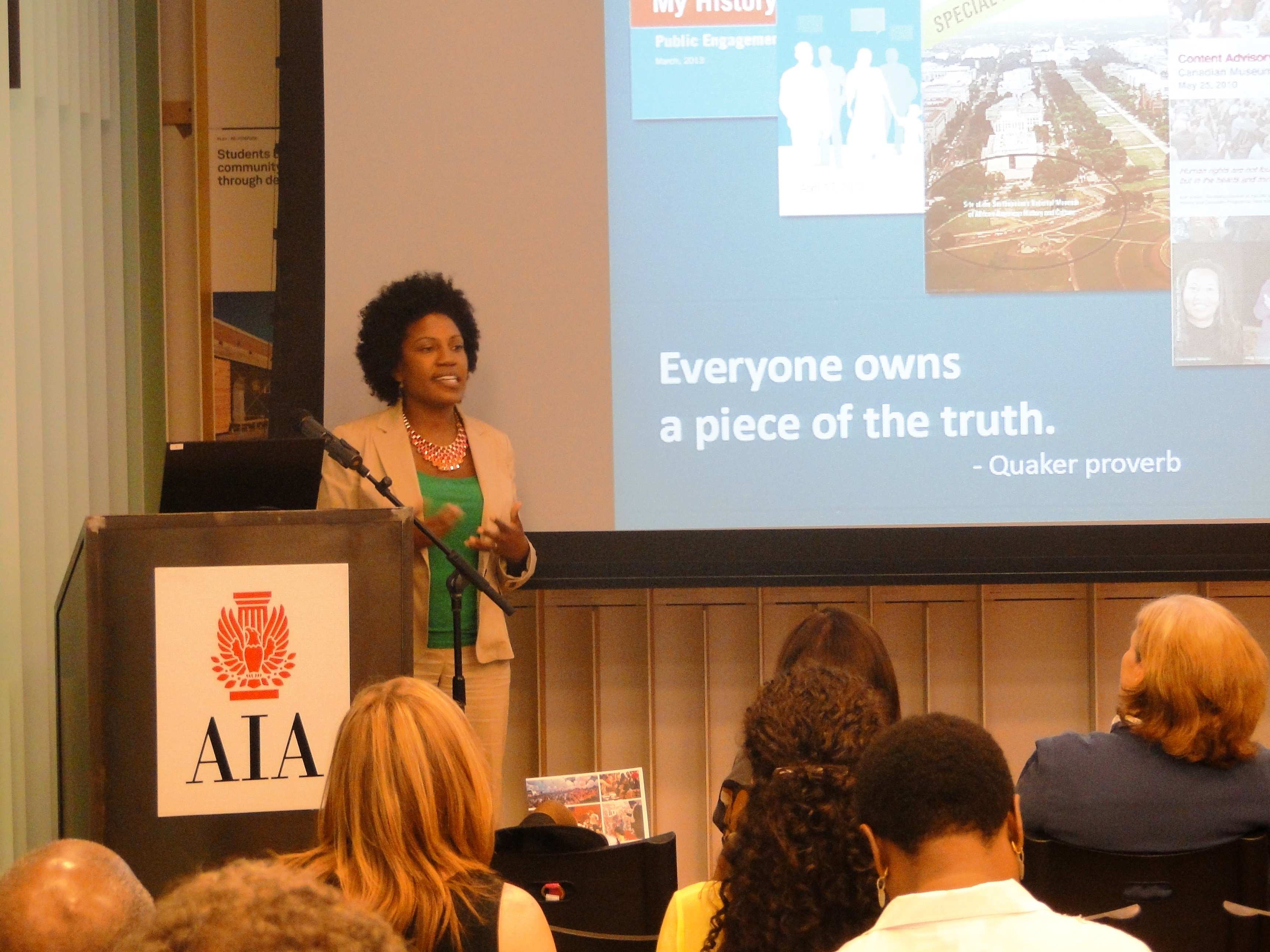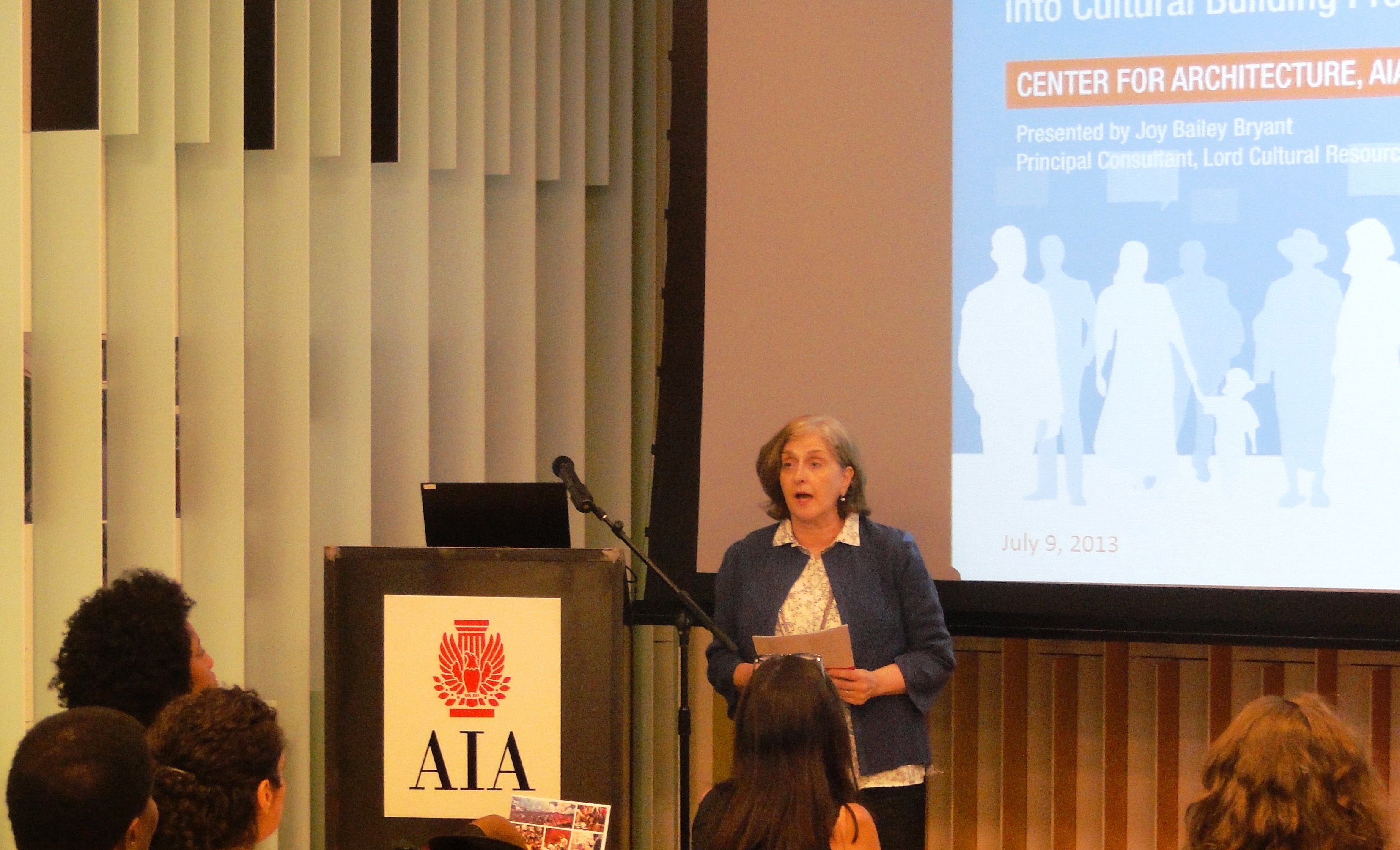by: chas
From the moment she took the podium, it was evident why Joy Bailey Bryant is so successful in her career as a cultural planner and outreach specialist. Bryant immediately announced that this 07.09.13 event, titled “Listen and They Will Build: Incorporating the Results of Community Engagement into Cultural Building Projects,” would be more of a conversation than a formal lecture, and that she was eager to hear thoughts and feedback from the audience. In her capacity as principal consultant with Lord Cultural Resources, she employs these tactics on a daily basis for community outreach and engagement when advising on cultural plans and institutions. In her presentation, Bryant outlined recommendations for successful engagement in cultural planning and illustrated her approach with two Lord projects: the National Civil Rights Museum in Memphis and the Museum of the African Diaspora in San Francisco.
Social and digital media have allowed leaps forward in the frequency and success of engagement efforts, going beyond the traditional public meeting, which must be planned well in advance for a specific date and time, and can usually accommodate a limited number of participants. Bryant pointed out that the very definition of public engagement lends itself to online platforms, which can support constant conversations and feedback. Public engagement “connects the institution and its audiences, allowing interaction, dialogue, participation, sharing, and learning to the benefit of all involved,” she said. Perhaps more importantly, it is an iterative process, requiring several phases of gathering input and incorporating ideas, then returning to the community for feedback on implementation and future ideas. For Bryant, the best strategies uncover what community members celebrate about their surroundings to inform new plans and create a feeling of connectivity.
Bryant also pointed out that outreach can spark all types of local collaborations that may not otherwise have occurred, contributing to a more vibrant community even after a plan or building is complete.
In Memphis, the National Civil Rights Museum provoked an outcry when it announced a major renovation plan around the 50th anniversary of Martin Luther King, Jr.’s assassination. Local residents felt the museum and its leadership had forgotten the community it was meant to serve in favor of recognition as a national and international visitor destination. The museum leveraged this opportunity for outreach and learned how valuable and powerful the public space surrounding the museum was for the Memphis community, and incorporated the community’s wishes into the revamped museum, such as listening posts and other points of engagement in the area outside the museum itself.
Similarly, when San Francisco’s Museum of the African Diaspora was first conceived, “pride of place” came up as a key issue. Potential visitors wanted to feel proud of the museum’s space, and saw it as an opportunity to illustrate the diasporic community’s connections to, and changing relationship with, the city and the world at large. Museum staff and designers used this input to create a museum in a highly visible and distinctive Yerba Buena location with an ever-changing series of exhibitions.
Bryant’s examples demonstrate that engagement should be an ongoing activity that evolves. It engenders out-of-the-box thinking that can take cultural plans and institutions above and beyond the expected, lending a unique character to each one by embracing surrounding communities.
Following the presentation was a lively discussion about tactics for architects, planners, and other professionals working in the field of public engagement. All agreed that although most architects and planners receive years of training and education, it isn’t enough to arrive in a community and impart wisdom through building plans. The key to a truly successful, accepted, and vibrant end product is to listen to those who will actually be using and living with the result, and to keep learning from them long after the project is done.
Cassie Hackel is a community development professional with a background in multidisciplinary urban studies. She is currently a research associate with Plastarc Design Metrics.
Event: Listen and They Will Build: Incorporating the Results of Community Engagement into Cultural Building Projects
Location: Center for Architecture, 07.09.13
Speaker: Joy Bailey Bryant, Head of Cultural Planning, Lord Cultural Resources
Organizer: AIANY Cultural Facilities Committee









